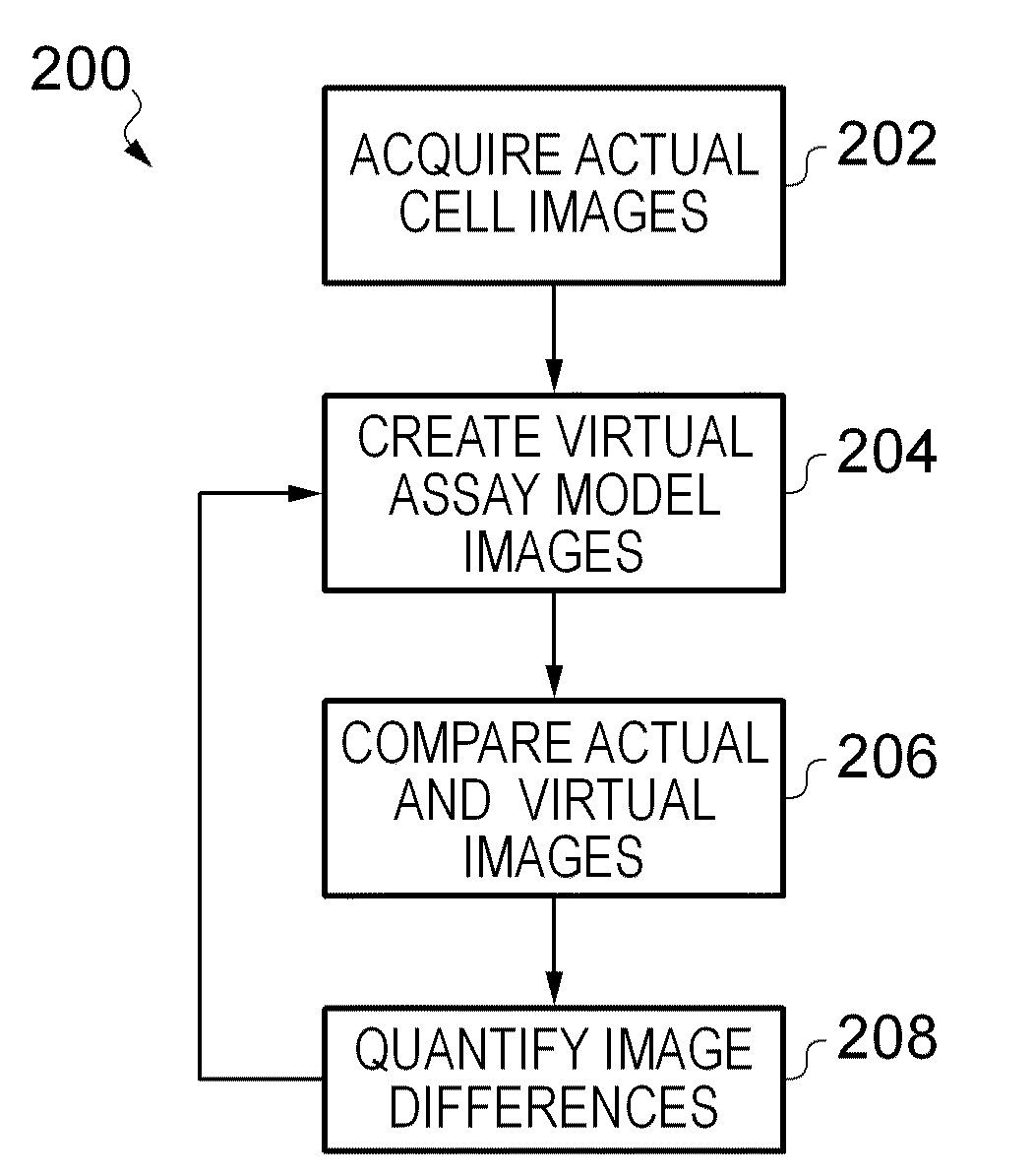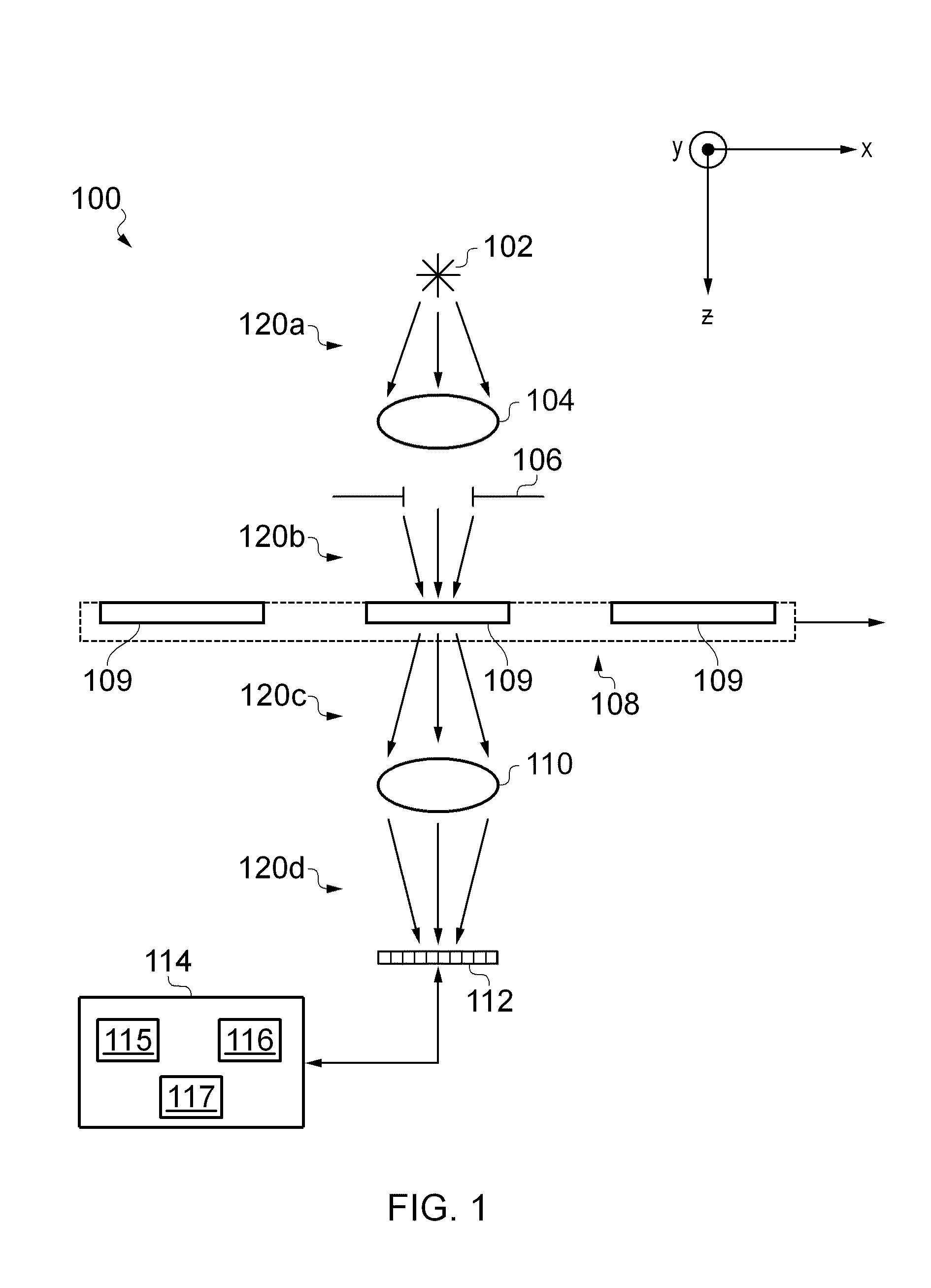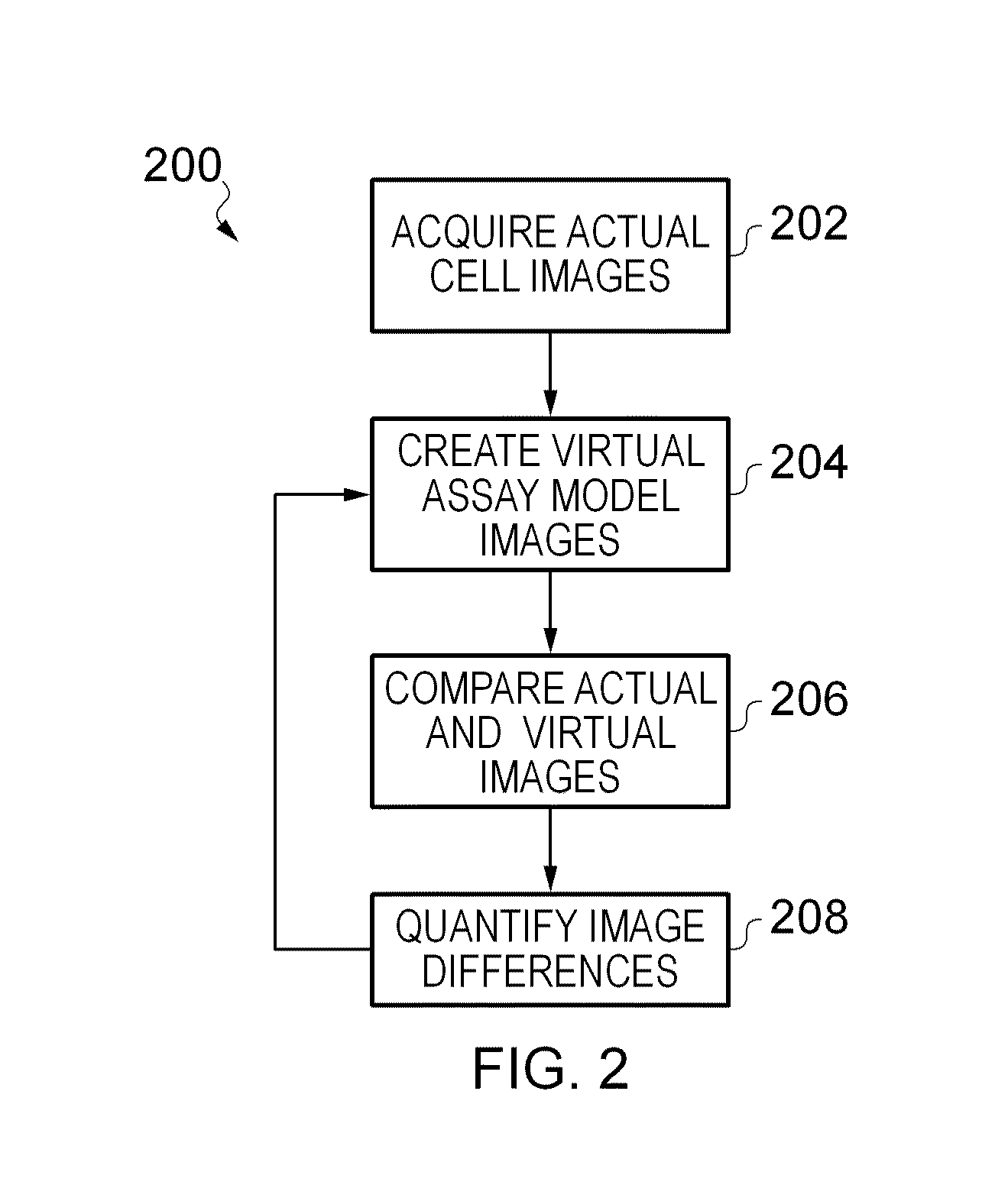System and method for automated biological cell assay data analysis
a biological cell and data analysis technology, applied in the field of system and method for automated biological cell assay data analysis, can solve the problems of inadequate phenomenological fitting expression availability, generally inability to provide certain important biological data, etc., and achieve the effect of improving quantifiable cell phenotype information
- Summary
- Abstract
- Description
- Claims
- Application Information
AI Technical Summary
Benefits of technology
Problems solved by technology
Method used
Image
Examples
first example
[0104]The first example analyzed the cytoplasmatic membrane integrity, as indicated by the TOTO-3 marker. TOTO-3 stains cell nuclei only after cell plasma membrane disruption. The response1(t) generated by disruption to the membrane is therefore a curve representing the increase of cell nuclei intensity in TOTO-3 channel. This intensity was measured by a microscopy HTS system. However, the exact moment when a particular membrane became disrupted was unpredictable.
[0105]The analysis therefore used stochastic fitting involving a single time parameter (the width of the box-shaped distribution of starting times of the response).
[0106]FIG. 11 represents the raw TOTO-3 response. The TOTO-3 response was taken for two values of drug concentration, denoted “high” and “low”. The bottom panel shows the response when treated with various control treatments (i.e. FCCP: p-trifluoromethoxy carbonyl cyanide phenyl hydrazone; CI: calcium ionophore A23187; Triton: Triton-X-100; Medium: culture medium...
second example
[0115]The second example analyzed a mitochondrial marker (TMRM) response. This analysis did not take into account stochastic effects and was therefore reduced to the usual fitting procedure for the FOV-averaged response. It was assumed that all cells started reacting immediately after drug addition. The reaction of a mitochondrial potential to a perturbation (i.e. a drug) is considered to be potentially very diverse.
[0116]The form of analytical expression used for response1(t) was as follows:
f(t)=A(1+KKzae-z)+range(1-e-z)Equation16[0117]with limits f(0)=A, f(∞)=A+range[0118]and where
z=tτ,τ=K-1α
where range, K and α are three fitting parameters, and A is fixed being assigned after inspection of the response on unperturbed cells (i.e. as a baseline).
[0119]The expression defined in Equation 16 above is very flexible, and uses as a fitting parameter the single time scale (“τ”), amplitude (“range”) and another parameter (“α”) for controlling response nonlinearity.
[0120]FIG. 14 shows the r...
PUM
 Login to View More
Login to View More Abstract
Description
Claims
Application Information
 Login to View More
Login to View More - R&D
- Intellectual Property
- Life Sciences
- Materials
- Tech Scout
- Unparalleled Data Quality
- Higher Quality Content
- 60% Fewer Hallucinations
Browse by: Latest US Patents, China's latest patents, Technical Efficacy Thesaurus, Application Domain, Technology Topic, Popular Technical Reports.
© 2025 PatSnap. All rights reserved.Legal|Privacy policy|Modern Slavery Act Transparency Statement|Sitemap|About US| Contact US: help@patsnap.com



